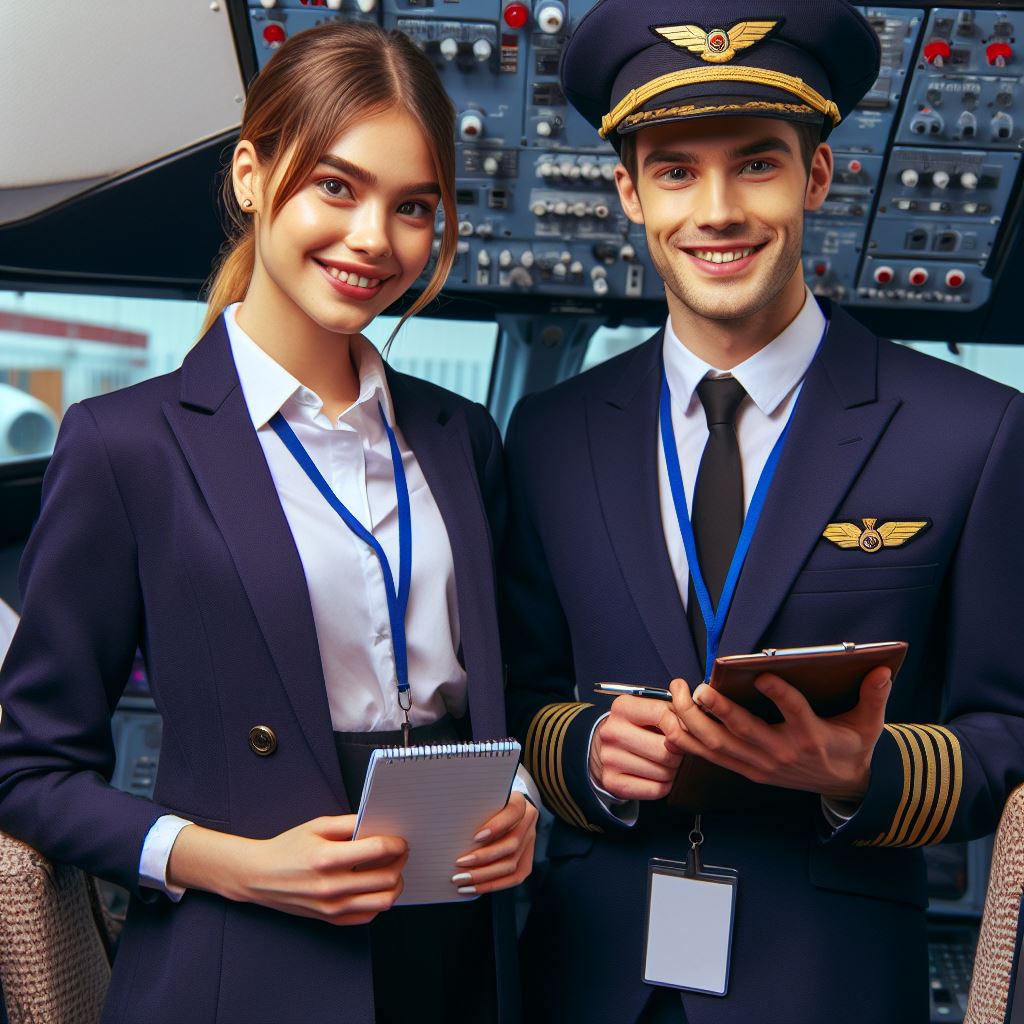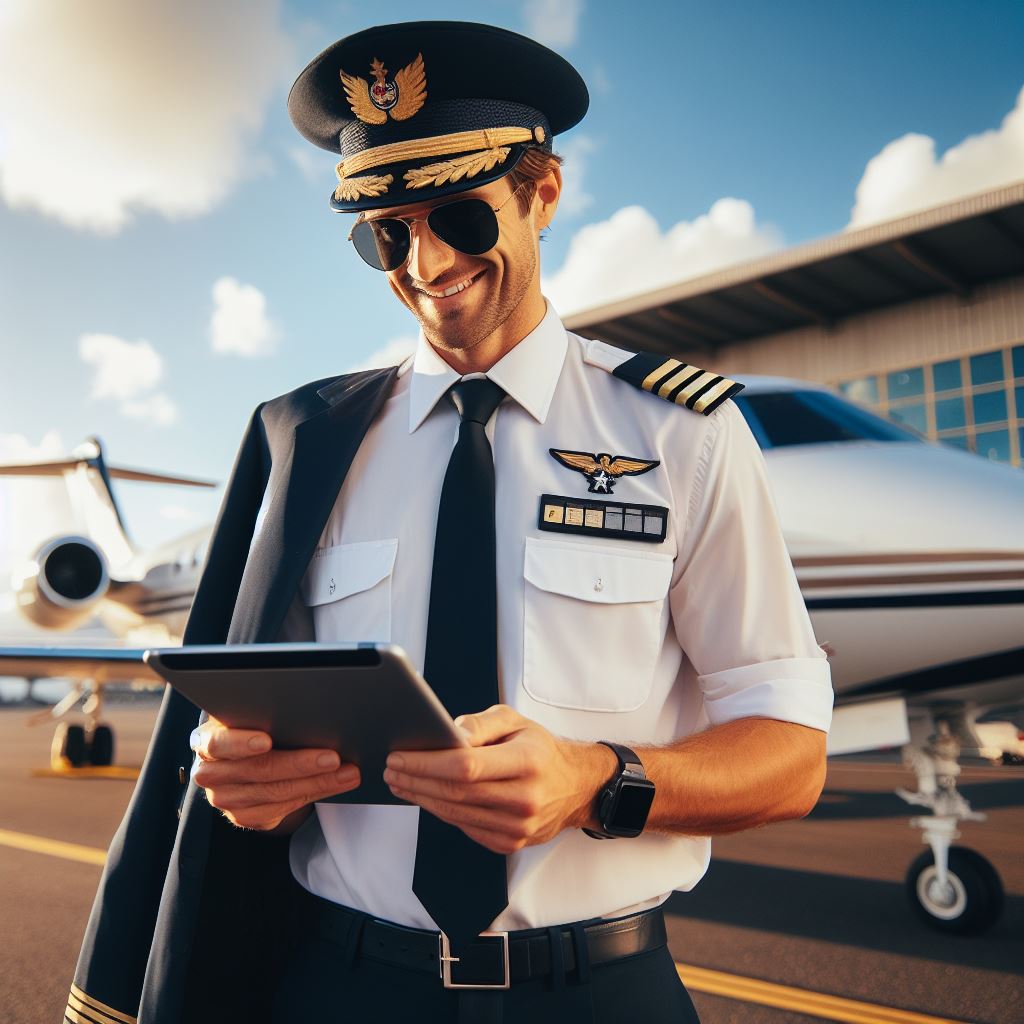Introduction
Technology has revolutionized the way the aviation industry operates in Australia. With continuous advancements in technology, the industry has witnessed significant improvements in terms of efficiency, safety, and customer experience.
The aviation industry is vital for Australia’s economic growth and connectivity with the rest of the world. It not only facilitates domestic and international travel but also serves as a major source of employment and revenue for the country.
The introduction of technology in the aviation sector has led to remarkable enhancements in various areas. For instance, the implementation of advanced air traffic management systems has allowed for more precise flight routes and reduced congestion in busy airspace.
Furthermore, the use of digital ticketing systems and automated check-in processes has simplified the travel experience for passengers, making it more convenient and time-efficient. Passengers can now book and manage their flights online, avoiding long queues and paperwork.
Moreover, technology has significantly improved aircraft maintenance procedures, ensuring the safety and reliability of flights. Sophisticated monitoring systems and predictive maintenance tools help identify and address potential faults before they pose a risk.
The integration of technology also enhances communication and collaboration between airlines, airports, and regulatory bodies, streamlining operations and promoting smoother coordination.
In review, technology has revolutionized the Aussie aviation industry, playing a crucial role in improving efficiency, safety, and customer experience.
The industry’s significance cannot be overstated, as it contributes to Australia’s economic growth and connectivity with the world. The continuous adoption of technology will further drive advancements in this vital sector.
Overview of technology’s impact on Aussie aviation
Evolution of technology in aviation
- Technology has played a crucial role in shaping the Australian aviation industry over the years.
- In the early days, basic navigation instruments such as compasses and radios were used.
- The introduction of jet engines revolutionized the speed and efficiency of air travel.
- Computerized reservation systems made booking flights easier for both passengers and airlines.
- Modern aircraft are equipped with advanced avionics systems for navigation and communication.
- The development of radar systems improved air traffic control and safety.
Current use of technology in the sector
- The Australian aviation industry heavily relies on technology for various operations.
- Airlines use sophisticated computer systems to manage flight schedules, crew assignments, and passenger reservations.
- Airports utilize advanced security systems such as biometric scanners and X-ray machines.
- Flight simulators are used for pilot training and to enhance safety.
- Improved weather forecasting technology helps airlines in planning flight routes and avoiding severe weather conditions.
- Communication systems like satellite phones and Wi-Fi enable passengers to stay connected during flights.
Examples of technological advancements in Aussie aviation
- Automatic Dependent Surveillance-Broadcast (ADS-B) systems have been implemented in Australian airspace.
- ADS-B enhances surveillance by broadcasting an aircraft’s position, altitude, and velocity to air traffic control.
- Smart luggage systems with GPS tracking have been introduced to prevent lost or mishandled baggage.
- The use of drones in surveillance and aircraft inspections has increased.
- The development of biofuels aims to reduce the environmental impact of aviation.
- Virtual reality technology is being utilized for training cabin crews and enhancing passenger experiences.
Overall, technology has significantly transformed the Australian aviation industry, making it safer, more efficient, and convenient.
The evolution of technology from basic instruments to advanced avionics and computer systems has revolutionized air travel.
Current technological advancements continue to enhance operations, improve safety measures, and provide a better travel experience for passengers.
As technology continues to evolve, the Aussie aviation sector can expect even more innovations in the future.
Improving safety and maintenance
Introduction of safety management systems
Safety in aviation has always been a top priority, and the role of technology in improving safety cannot be underestimated. One important development in recent years has been the introduction of safety management systems (SMS).
SMS is a comprehensive approach to managing safety, and it involves the integration of people, processes, and technology.
It enables aviation organizations to identify potential hazards, assess risks, and implement proactive measures to prevent accidents and incidents.
The use of technology plays a crucial role in supporting SMS implementation. For instance, airlines can use advanced software to collect and analyze safety data, identify trends, and take corrective actions.
This helps in making informed decisions and continuously improving safety performance.
Use of data analytics in predicting maintenance needs
Maintenance is another critical aspect of aviation, and technology has revolutionized the way aircraft are maintained.
One significant advancement is the use of data analytics in predicting maintenance needs.
Traditionally, aircraft maintenance was primarily based on scheduled inspections and routine checks.
However, this approach was not always efficient, as it did not take into account the actual condition of the aircraft.
With the advent of data analytics, aircraft operators can now monitor the health of various components in real-time.
Sensors and advanced software collect data on parameters such as temperature, pressure, and vibration.
This data is then analyzed to detect any anomalies or potential failures.
By predicting maintenance needs, operators can schedule proactive maintenance activities, reducing the chances of unexpected breakdowns and minimizing operational disruptions.
This not only improves safety but also reduces costs associated with unscheduled maintenance.
Implementation of drones for safety inspections
Drones, or unmanned aircraft systems (UAS), have become increasingly popular in aviation for various purposes, including safety inspections.
Drones offer a cost-effective and efficient way to inspect aircraft and infrastructure.
Traditionally, safety inspections were carried out manually, which required trained personnel to visually inspect various components and structures.
This process was time-consuming and potentially dangerous.
By implementing drones, safety inspections can now be conducted more quickly and safely.
Drones equipped with high-resolution cameras or sensors can capture detailed images or data from hard-to-reach areas.
This allows inspectors to identify any potential issues or defects without the need for physical contact.
Furthermore, drones can also be used to inspect runways, terminals, and other infrastructure, ensuring compliance with safety regulations.
This reduces the time and resources required for inspections, enabling aviation organizations to focus on other critical tasks.
In essence, technology has played a significant role in improving safety and maintenance in Aussie aviation.
The introduction of safety management systems, the use of data analytics for predicting maintenance needs, and the implementation of drones for safety inspections have all contributed to enhancing safety and efficiency in the industry.
These technological advancements will continue to evolve and shape the future of aviation, ensuring safer skies for everyone.
Enhancing communication and navigation
Utilization of satellite communication systems
Satellite communication systems play a crucial role in enhancing communication and navigation in the Aussie aviation industry.
These systems utilize satellites to transmit and receive data, enabling seamless communication between aircraft and ground control.
With satellite communication systems, pilots can now communicate with air traffic controllers at any altitude or location. This ensures that pilots receive important updates and instructions in real-time, leading to improved safety and efficiency in flight operations.
Your Personalized Career Strategy
Unlock your potential with tailored career consulting. Get clear, actionable steps designed for your success. Start now!
Get StartedFurthermore, satellite communication systems enable the transmission of vital data such as weather conditions, air traffic information, and airspace restrictions.
This helps pilots make informed decisions and adjust their flight plans accordingly, avoiding potential hazards and delays.
Development of advanced radar systems
The development of advanced radar systems has revolutionized navigation in the Aussie aviation industry. These systems use radio waves to detect and track aircraft, providing accurate and up-to-date information on their position and movement.
Advanced radar systems have significantly enhanced situational awareness for pilots and air traffic controllers. They help identify and track aircraft in real-time, even in adverse weather conditions or low visibility situations.
This ensures safe separation between aircraft and enables the efficient management of air traffic.
Moreover, advanced radar systems can detect and alert pilots of potential obstacles or hazards in their flight path, such as other aircraft or terrain. This allows pilots to take timely action and avoid collisions, enhancing overall safety in the skies.
Integration of digital flight management systems
The integration of digital flight management systems has further improved communication and navigation in Aussie aviation.
These systems automate various tasks and processes, streamlining flight operations and reducing human errors.
Digital flight management systems provide pilots with precise navigation information, including waypoints, routes, and altitude restrictions.
This ensures accurate and efficient flight planning, improving fuel efficiency and reducing environmental impact.
Additionally, these systems enable the automatic exchange of flight-related data between pilots, air traffic controllers, and ground support personnel.
This seamless flow of information enhances coordination and collaboration, leading to smoother flight operations.
Furthermore, digital flight management systems can automatically calculate and optimize flight trajectories based on real-time weather conditions and air traffic congestion.
This allows pilots to choose the most efficient routes and altitudes, minimizing fuel consumption and reducing flight delays.
In fact, the role of technology in Aussie aviation, particularly in communication and navigation, is paramount.
Utilization of satellite communication systems, development of advanced radar systems, and integration of digital flight management systems have significantly enhanced safety, efficiency, and environmental sustainability in the industry.
Continued advancements in technology will undoubtedly shape the future of Aussie aviation, ensuring a seamless and interconnected airspace system.
Read: Day in the Life of an Aussie Train Driver
Increasing efficiency and performance
With the continuous advancement of technology, the Australian aviation industry has witnessed a significant increase in efficiency and performance.
This has been made possible through the utilization of various innovative tools and techniques, enhancing operations across the board.
Utilization of advanced flight planning software
To enhance efficiency in flight planning, airlines in Australia have increasingly adopted advanced flight planning software.
This software utilizes real-time data, weather information, and complex algorithms to optimize flight routes and reduce fuel consumption.
By analyzing various factors such as wind direction, altitude, and fuel burn rates, these software solutions can identify the most efficient flight paths.
Furthermore, advanced flight planning software also takes into account airspace restrictions, traffic congestion, and airport conditions to create flight plans that minimize delays and maximize efficiency.
This technology enables airlines to save time, reduce costs, and improve overall flight performance.
Adoption of next-generation aircraft engines
Another significant development in the Australian aviation industry is the adoption of next-generation aircraft engines.
These engines utilize advanced technology and materials to significantly improve fuel efficiency and reduce emissions.
By incorporating features such as high-bypass ratios, improved combustion systems, and lightweight materials, these engines offer enhanced performance and reduced environmental impact.
Next-generation aircraft engines not only provide significant fuel savings but also offer increased power and thrust.
This allows airlines to achieve higher speeds, reduce flight times, and enhance overall operational efficiency.
With the introduction of these engines, airlines in Australia are able to offer more cost-effective and sustainable air travel options.
Introduction of electric and hybrid aircraft
The aviation industry in Australia is also at the forefront of embracing electric and hybrid aircraft technology.
These innovative aircraft utilize electric propulsion systems, reducing reliance on traditional fossil fuels and minimizing carbon emissions.
Electric and hybrid aircraft offer several advantages, including lower noise levels, reduced operating costs, and improved efficiency.
These aircraft are particularly suitable for short-haul flights and regional operations, where the limited range is not a significant constraint.
Electric and hybrid aircraft have the potential to revolutionize the aviation industry by providing greener and more sustainable air travel options.
In a nutshell, technology plays a crucial role in increasing efficiency and performance in the Australian aviation industry.
The utilization of advanced flight planning software allows for optimized flight routes, reduced fuel consumption, and minimized delays.
The adoption of next-generation aircraft engines offers improved fuel efficiency, increased power, and reduced emissions.
Additionally, the introduction of electric and hybrid aircraft presents a greener and more sustainable future for air travel.
With these advancements, the Australian aviation industry is well-positioned to enhance its efficiency and contribute to a more sustainable future.
Read: How to Become a Train Driver in Australia

Impact on customer experience
The role of technology in the aviation industry has greatly enhanced the overall customer experience. From streamlined boarding processes to thrilling in-flight entertainment options, technology continues to revolutionize how airlines operate.
Implementation of biometrics for streamlined boarding
One major technological advancement that has significantly impacted the customer experience is the implementation of biometrics for streamlined boarding.
Passengers can now simply use their fingerprints or facial recognition to go through security checkpoints and board the plane, eliminating the need for traditional paper boarding passes and tedious manual checks.
This revolutionary technology not only reduces wait times but also enhances security, as biometric data is unique to each individual. No longer do passengers need to worry about misplaced or stolen boarding passes, as their biometric information is securely stored in the system.
Stand Out with a Resume That Gets Results
Your career is worth more than a generic template. Let us craft a resume and cover letter that showcase your unique strengths and help you secure that dream job.
Get HiredIntegration of in-flight entertainment systems
Another area where technology has transformed the customer experience is in-flight entertainment. Gone are the days of limited choices and subpar quality.
Airlines now offer state-of-the-art entertainment systems that provide passengers with a wide range of options, including movies, TV shows, music, and even interactive games.
With high-resolution screens and noise-canceling headphones, passengers can immerse themselves in their preferred entertainment while flying. This not only makes long-haul flights more enjoyable but also helps pass the time for those who may not be fond of flying.
Virtual reality in pilot training
Technology has also played a crucial role in enhancing pilot training.
Virtual reality (VR) has become an invaluable tool, allowing aspiring pilots to gain realistic flight experience in a controlled and safe environment.
Through VR simulations, pilots can practice various scenarios, including emergencies and adverse weather conditions, without the risks associated with traditional training methods.
This immersive training helps pilots develop their skills and decision-making abilities, ultimately leading to safer and more efficient flights.
Additionally, VR is also used for ongoing training and skill enhancement for experienced pilots.
They can simulate challenging situations or practice the use of new aircraft systems, ensuring they stay up to date with the latest technological advancements.
All in all, technology has had a profound impact on the customer experience in the Australian aviation industry.
From streamlined boarding through biometrics to top-of-the-line in-flight entertainment systems, passengers now enjoy a more convenient and enjoyable journey.
Moreover, the use of virtual reality in pilot training has significantly enhanced safety and proficiency in the aviation industry.
As technology continues to advance, we can expect further improvements in the customer experience, making flying even more accessible and enjoyable for everyone.
Read: Impact of Tech on Train Driving in Oz
Learn More: Retiring as an Airline Pilot in Australia
Future trends and challenges
Potential of autonomous aircraft
- Autonomous aircraft have the potential to revolutionize the aviation industry.
- They can improve efficiency, reduce operating costs, and enhance safety measures.
- With advanced technologies like artificial intelligence and machine learning, autonomous aircraft can make real-time decisions.
- However, challenges related to regulations, public acceptance, and infrastructure must be addressed.
- Nevertheless, the development and implementation of autonomous aircraft hold significant promise for the future.
Cybersecurity concerns in aviation technology
- The increasing reliance on technology in the aviation sector raises concerns about cybersecurity.
- Hackers targeting aviation systems can disrupt operations, compromise passenger safety, and cause financial losses.
- A robust cybersecurity framework is essential to safeguard aircraft systems, data, and critical infrastructure.
- Collaboration between aviation stakeholders, government agencies, and cybersecurity experts is crucial to mitigate risks.
- Ongoing monitoring, regular system updates, and employee training are necessary to stay ahead of cyber threats.
Infrastructure upgrades required for technological advancements
- To support technological advancements in Aussie aviation, infrastructure upgrades are necessary.
- Airports need improved communication systems, including enhanced connectivity and data sharing capabilities.
- Investments in runway technologies, air traffic management systems, and navigation infrastructure are crucial.
- Upgrading infrastructure will enable seamless integration of new technologies and enhance operational efficiency.
- The collaboration between government, aviation authorities, and private sector stakeholders is vital for successful infrastructure upgrades.
In general, the future of Aussie aviation is poised for exciting advancements driven by technology.
The potential of autonomous aircraft presents opportunities for increased efficiency, safety, and cost reduction.
However, addressing challenges related to regulations, public acceptance, and infrastructure is imperative.
Cybersecurity concerns must be taken seriously to mitigate risks and ensure the integrity of aviation systems.
Lastly, infrastructure upgrades are crucial to support technological advancements and enable seamless integration of new technologies.
By embracing these future trends and addressing challenges, Aussie aviation can continue to thrive and lead the industry forward.
Read: Train Driving in Australia: Pros & Cons
Explore Further: Case Study: Efficient Logistics in Australia
Conclusion
In closing, technology has played a crucial role in shaping the aviation industry in Australia.
Throughout this blog post, we have explored various ways in which technology has revolutionized Aussie aviation.
From improving aircraft safety with advanced navigation systems to enhancing passenger experience through in-flight entertainment, technology has transformed the way we travel.
Moreover, we have discussed the future prospects of the industry with continued technological advancements.
With the introduction of artificial intelligence, drones, and electric aircraft, the aviation industry in Australia is set to become more efficient and sustainable.
However, it is important to address the challenges that come with implementing new technologies, such as cybersecurity threats and the need for skilled professionals.
Transform Your LinkedIn for Maximum Impact
Elevate your professional brand with a LinkedIn profile that attracts recruiters, showcases your expertise, and maximizes opportunities. Stand out in your industry with a profile built for success.
Boost ProfileIn the end, while technology has significantly benefited the Aussie aviation industry, it also presents opportunities and challenges for its future growth.
As we embrace advancements in technology, it is crucial to strike a balance between innovation, safety, and sustainability.
To summarize, the role of technology in Aussie aviation is dynamic and ever-evolving, and it will continue to shape the industry for years to come.




